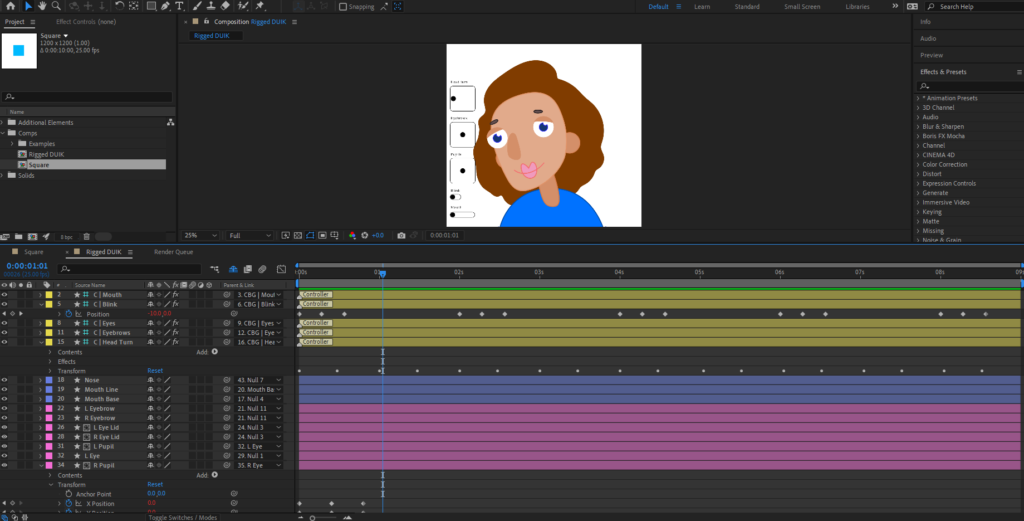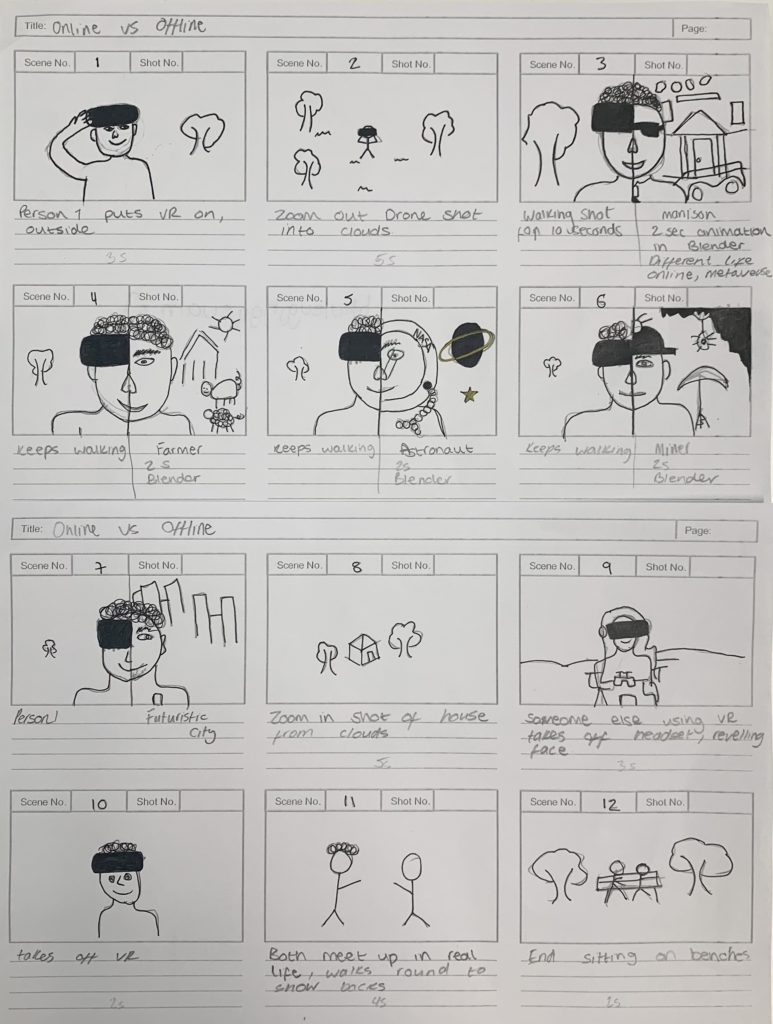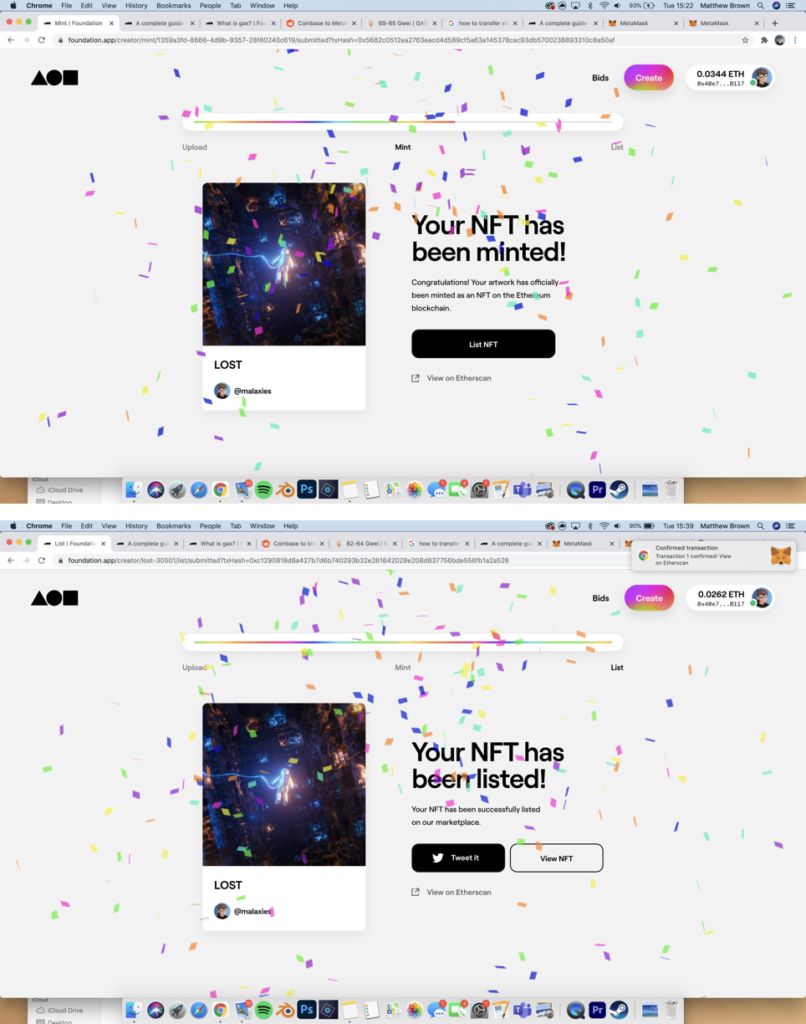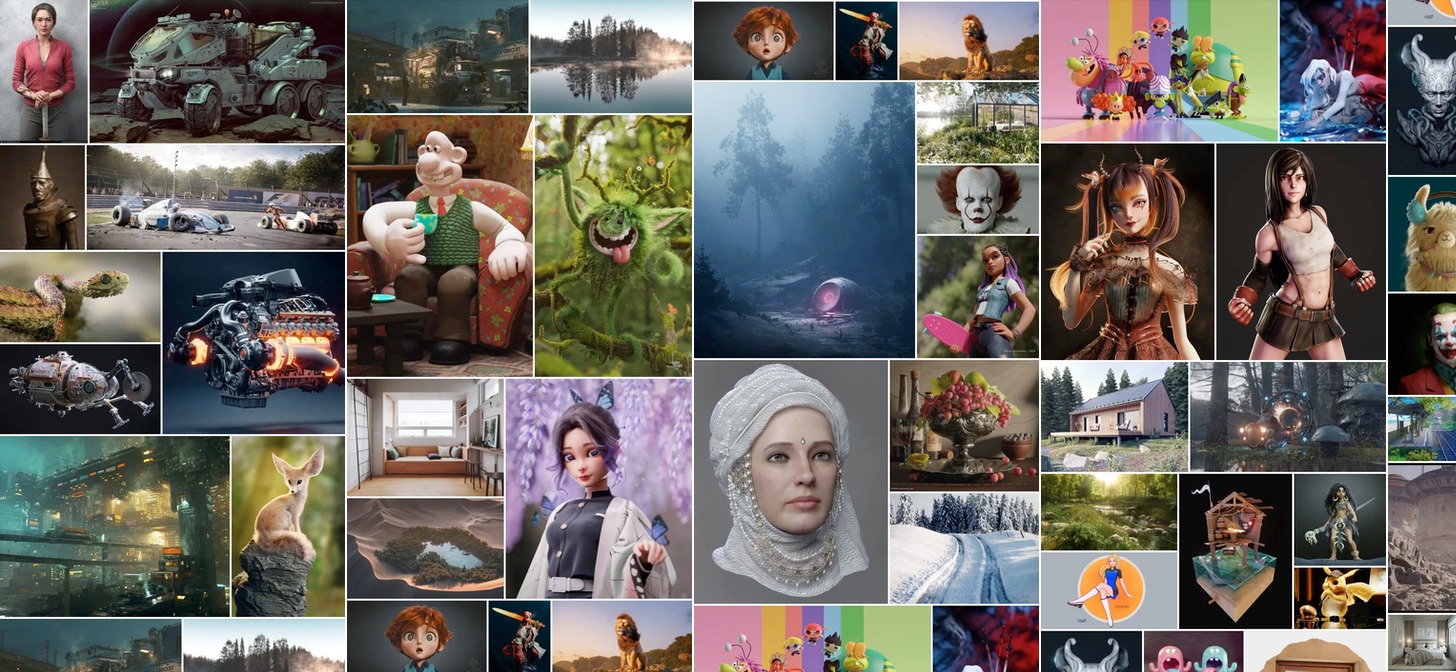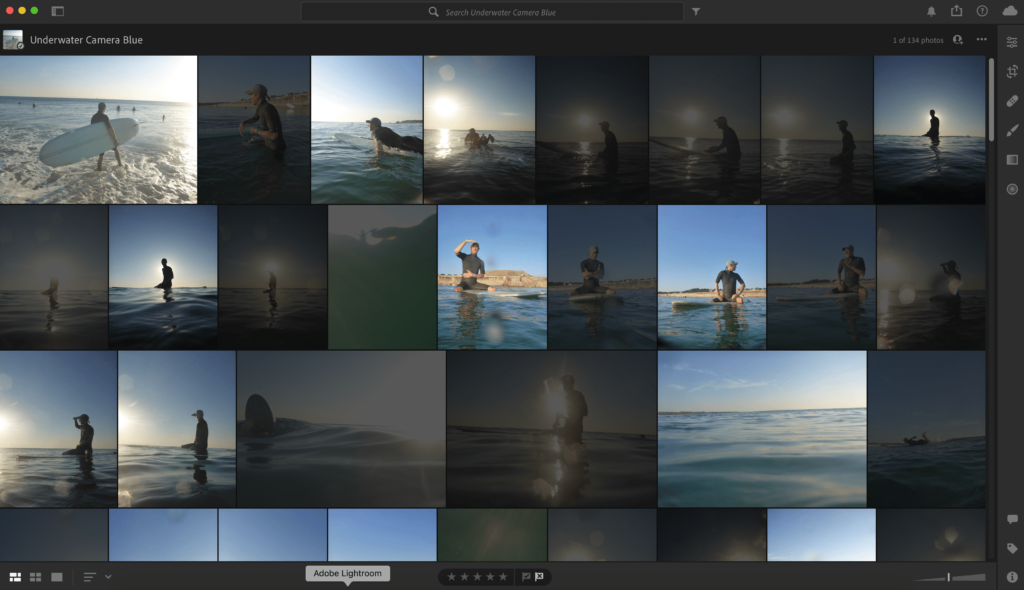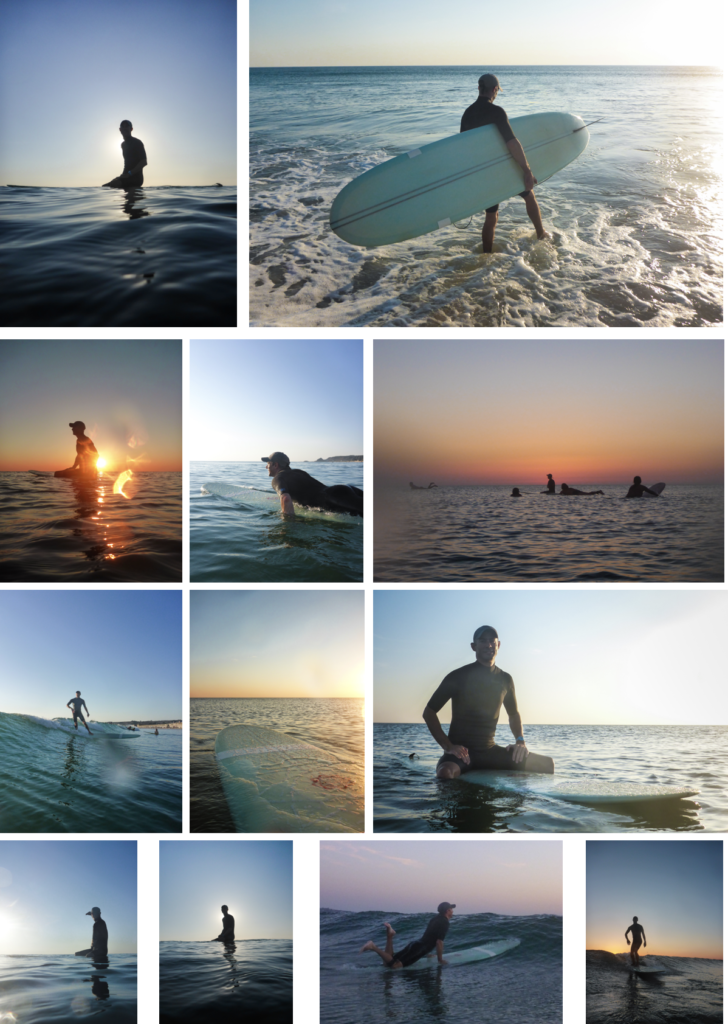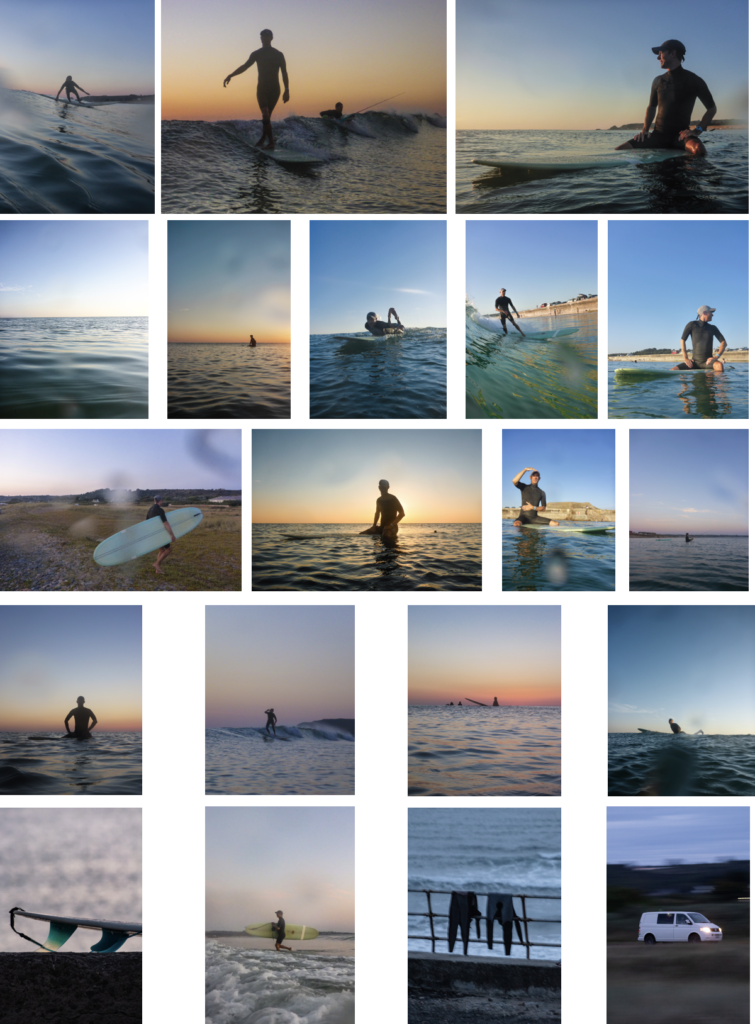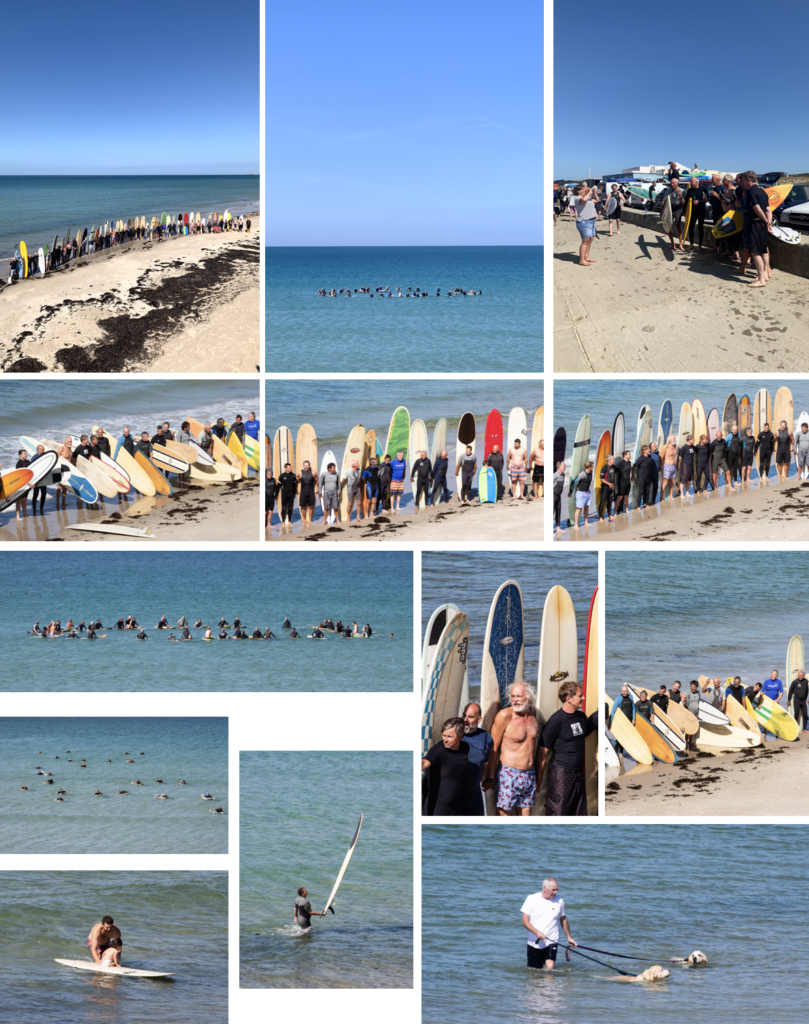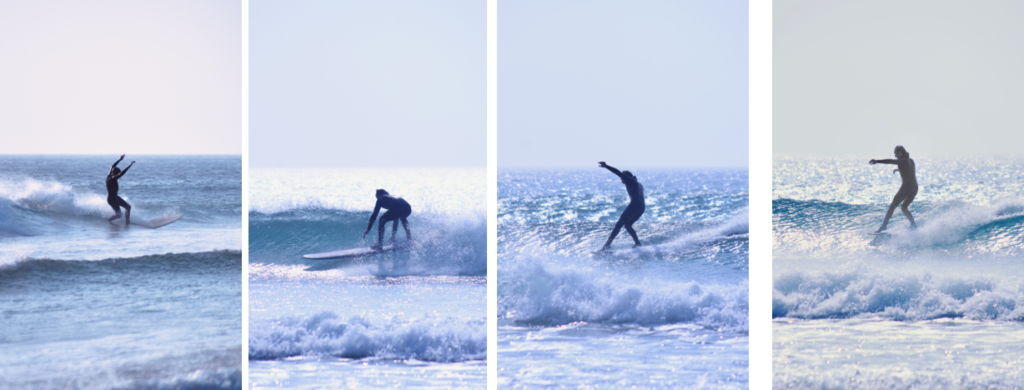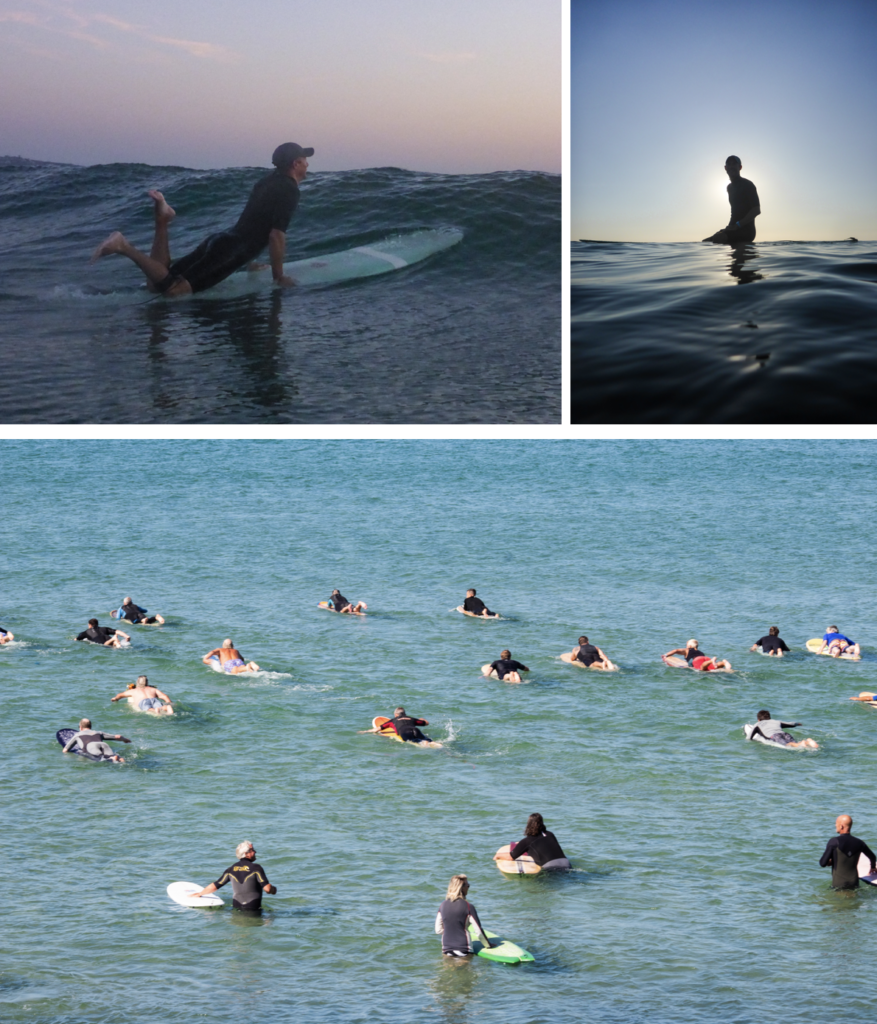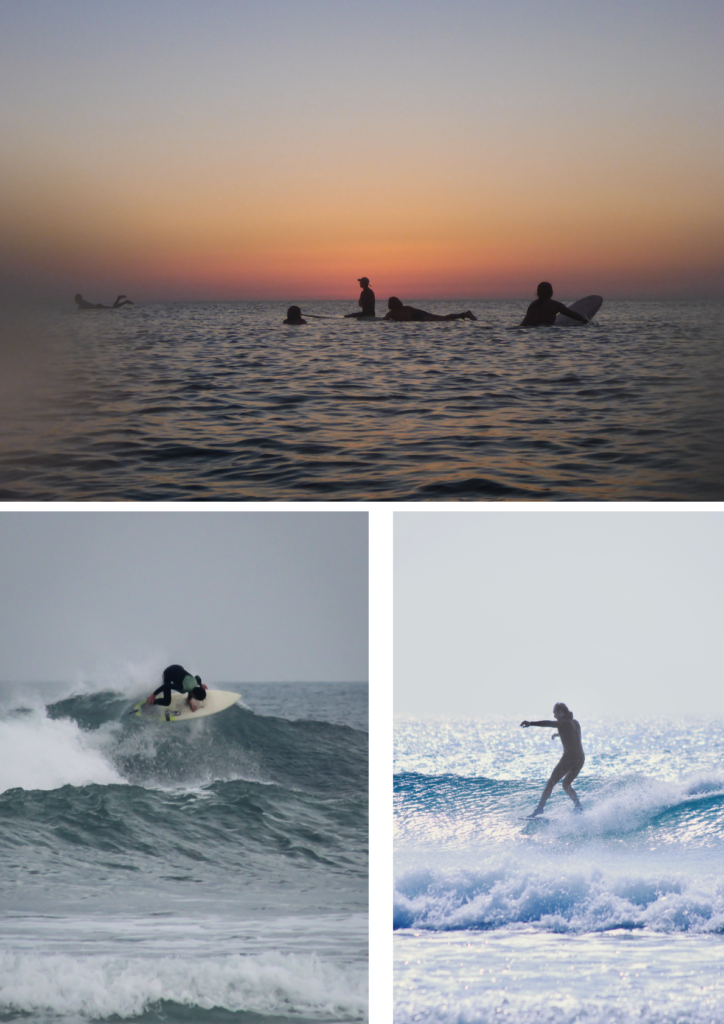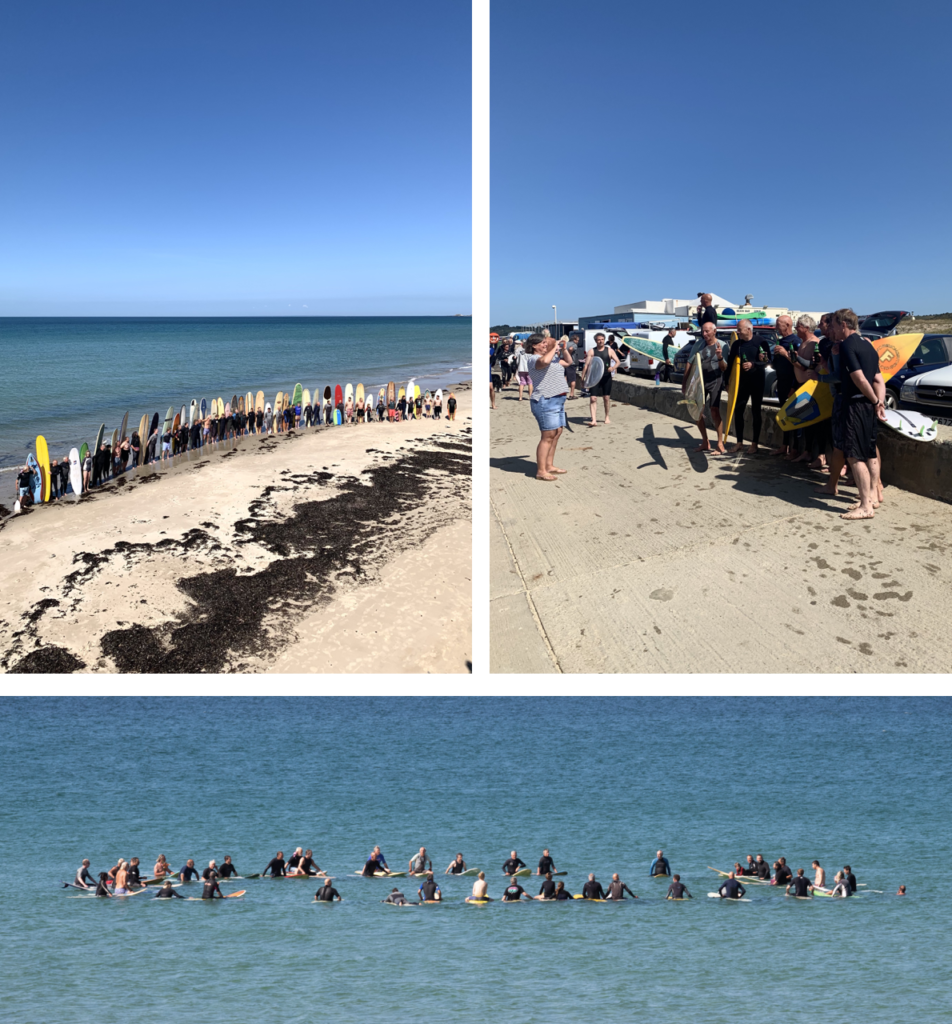For my groups NFT Film, we decided to use animation as a part of our video. I made all the aminated clips in Blender. I started off by finding low-poly art models of Sketchfab. then imported them into blender. Once in Blender I used simple animations to move the location of the scene, to give off the impression of the character walking.

This screenshot shows the timeline for the character walking. Every dot/diamond is a different movement of the character to make him walk. The character doesn’t actually move, it just walks on the spot. So I would have to animate the background. He walks on the spot as it makes it easier to only move the direction of the arms, legs etc, instead of the movement and lactation of everything. So the character and camera are stationary.

This is the scene, everything highlighted in orange is what is animated and included in the scene. I added 2 keyframes to the timeline. The first keyframe is where the buildings start, and the second is where they will end after the move and slide backwards. It slides backwards to give off the effect that the character is walking forwards. Each 2-3 second scene takes an estimated 8 hours to render.

This is the node setup for the lighting. I used a HDRI which is a spherical photo taken in real life, and the program works out where is sun is and creates the same lighting situation for inside the workspace. The orange box is the HDRI which is connected to the right two default boxes, then I added a remapping node to make the horizon of the world line up with the horizon I made in the workspace, so there aren’t photos of trees floating in the sky.
The Street Scene
Overall, the street scene is quite small. The scene is colourful which adds lots of contrast. All the scenes use depth of field to blur the background more as the character walks forward.
The left side is the object view, without the colour. Where as, the right side is the rendered, with colour.
The Farm Scene
This scene is more complex, as there is more shapes and objects. There is also larger range of colours, ranging from red to green, etc.
The Mansion Scene
This is one of my favourite scenes, as it features our main character walking outside his mansion. It is visually pleasing as uses a lot of dynamic shapes and contour.
The Beach Scene
This is one of the most colourful scenes as it uses mostly topical/beach colours. It contributes to having a diverse location for the 5 scenes.
The Space Scene
This was one of the harder scenes to make as I had to add a space helmet to him, however it is the most extreme scene as the character is in outer space.
The Zoom Out/In Animated House Scene
This animation was made to replace the original shot idea, to use a drone to zoom into a house, but we couldn’t do it due to privacy rules. So we used amination as a replacement as it fits in with the online/offline format and style.

This is what the scene looks in blender. The greyed out screenshots are the view in shader view, where as the coloured view is the rendered view, which is what it looks like when it is finished.
The camera is animated with 3 keyframes, both for location and rotation. It ends still to let the clouds move in, which allows for a clean transition from this clip to another, using a white fade transition. Overall, this clip took 12 hours to fully render 120 frames in blender.
Overall, this scene is good as it ends with a clean transition, of the clouds covering the screen. The camera is mostly smooth which follows the exponential curve, which allows for fluid movement.














